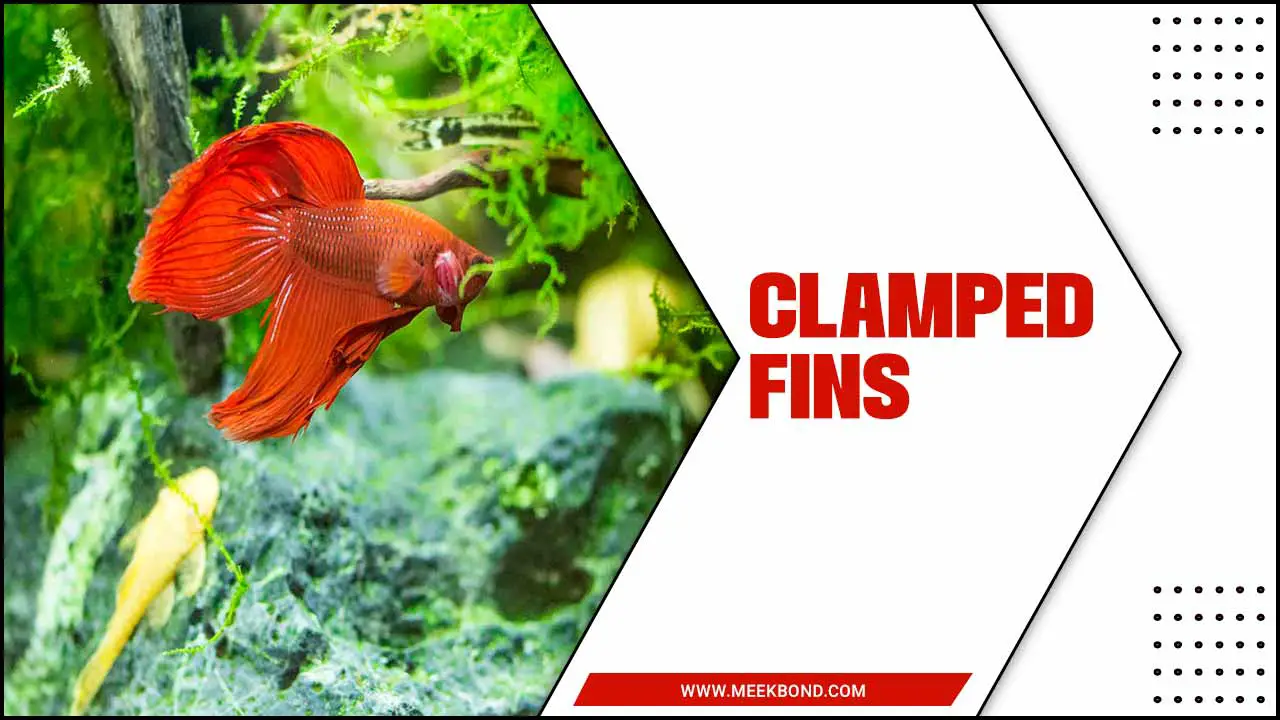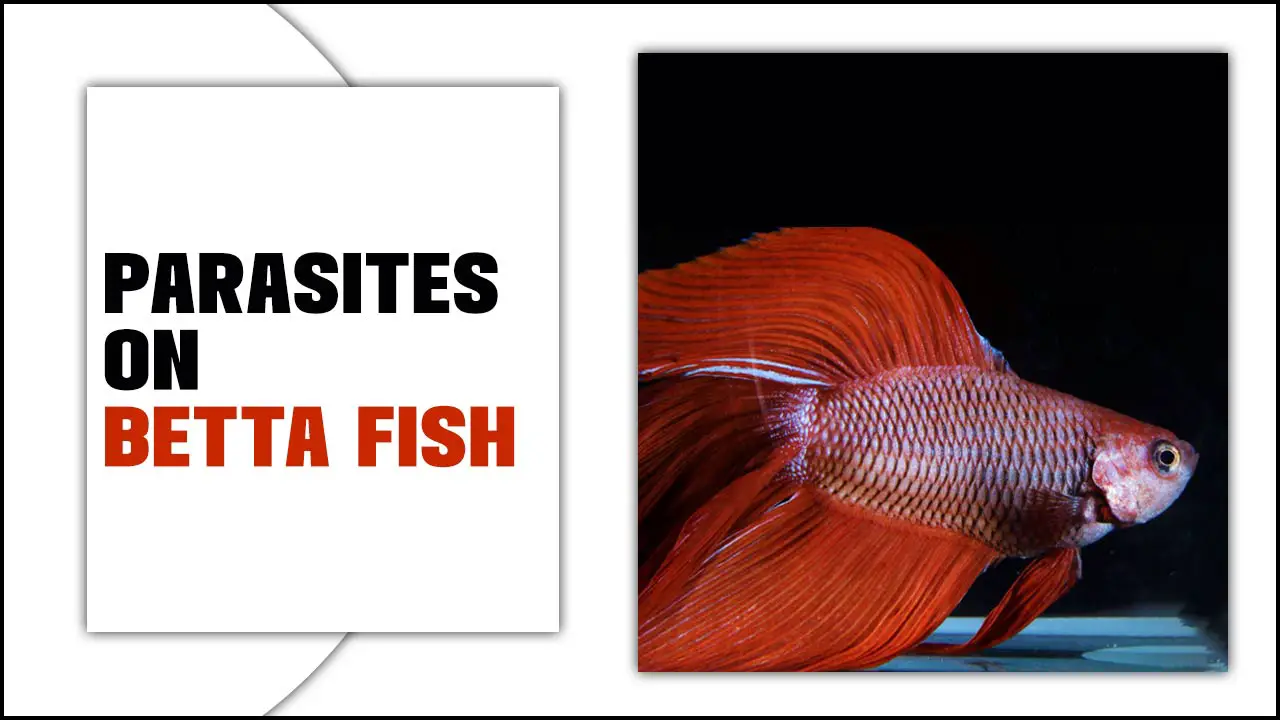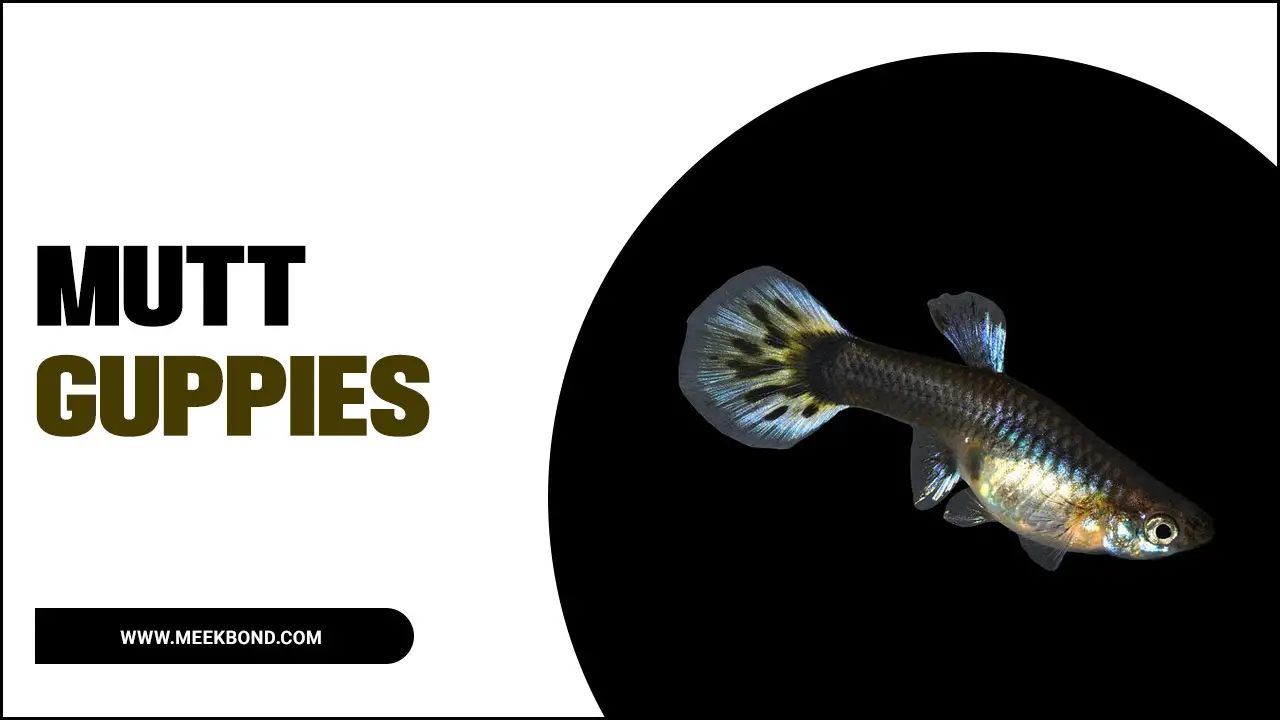Purple algae is a common issue many fish tank owners encounter, often leading to frustration and confusion. This type of algae, also known as cyanobacteria, can quickly spread and cover various surfaces in the tank, causing harm to both the aquatic life and the overall aesthetic of the tank.
Despite its misleading name, purple algae can come in various colors, from deep reds to vibrant blues. Its presence is unsightly and can also harm the health of fish and other organisms living in the tank.
As a result, it is crucial for fish tank owners to understand the causes, prevention, and treatment of purple algae to maintain a healthy and visually appealing tank. We will delve into the details of purple algae in fish tank and provide practical tips and solutions for managing its growth.
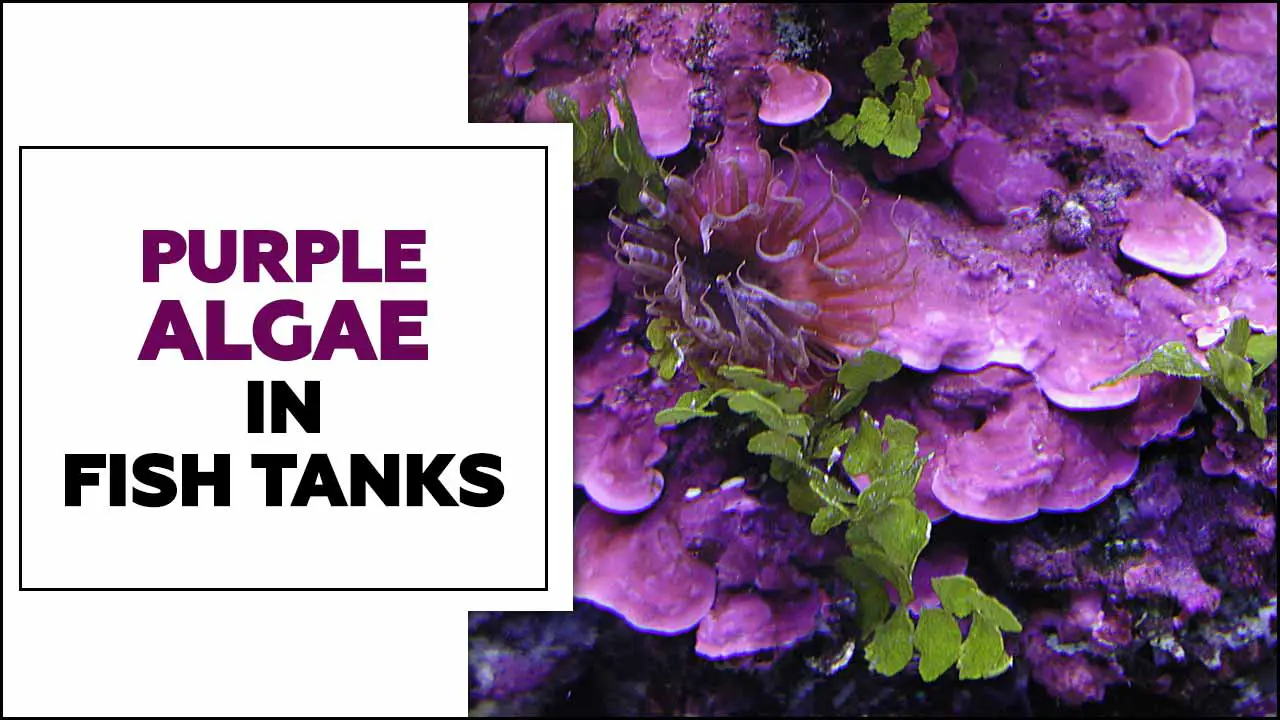
What Is Purple Algae?
Purple algae, red algae or Rhodophyta, is a diverse marine algae found in various aquatic environments such as oceans, lakes, and hot springs. Despite its name, purple algae can range from deep red to almost black. This type of algae has been around for millions of years and is vital in marine ecosystems as a primary producer, providing food and shelter for many marine organisms.
It is also an important source of carrageenan, a natural thickening agent used in the food and cosmetic industries. Purple algae’s unique characteristics and important ecological role continue to be an intriguing scientific research and exploration subject.
Causes Of Purple Algae In Fish Tanks
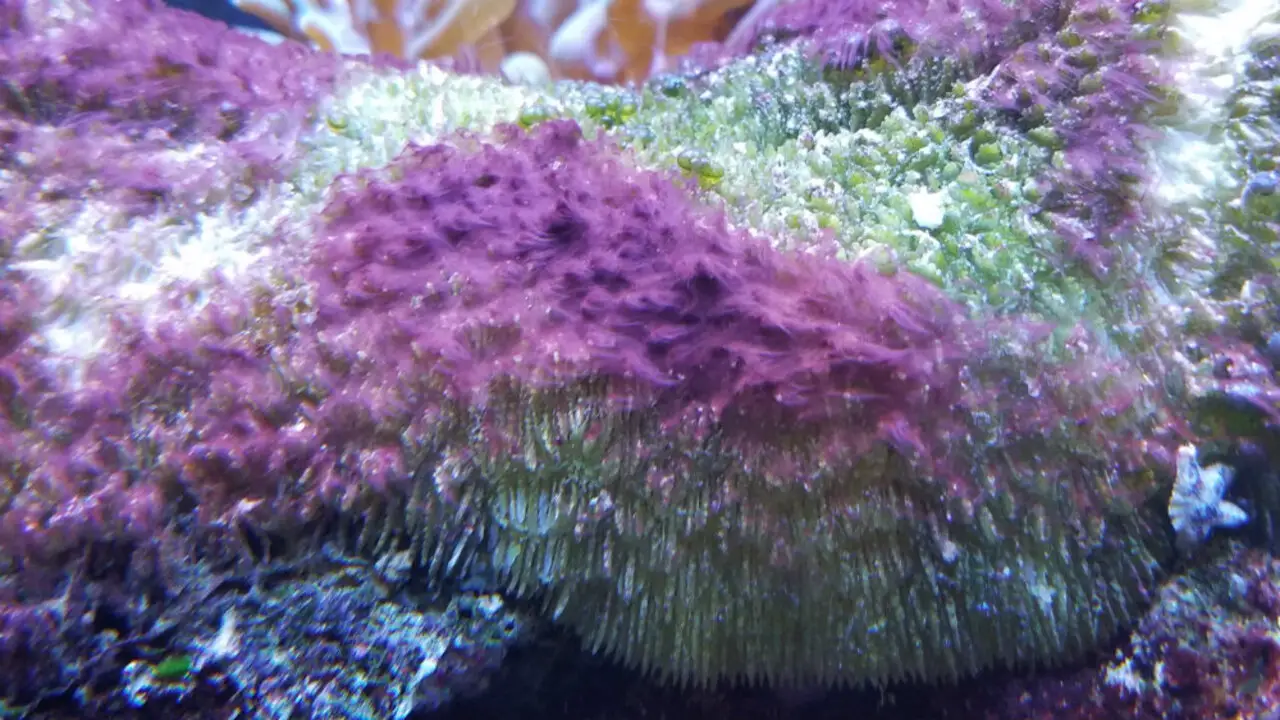
Poor water flow can be a leading cause of purple algae in fish tanks. Purple algae in fish tanks, or red slime algae, can frustrate fish tank owners. There are several potential causes of purple algae growth in fish tanks.
Including high levels of phosphates and nitrates in the water. Inadequate water flow or circulation and excessive lighting. These factors can create an ideal environment for purple algae to thrive. To prevent or eliminate purple algae growth.
Maintaining proper water chemistry through regular testing and water changes is important. Ensure adequate water flow and filtration, and adjust lighting as needed. Additionally, manually removing any visible purple algae from the tank can help to control its growth. Proper maintenance and attention to these factors allow you to keep your fish tank free from pesky purple algae.
Nutrient Imbalance
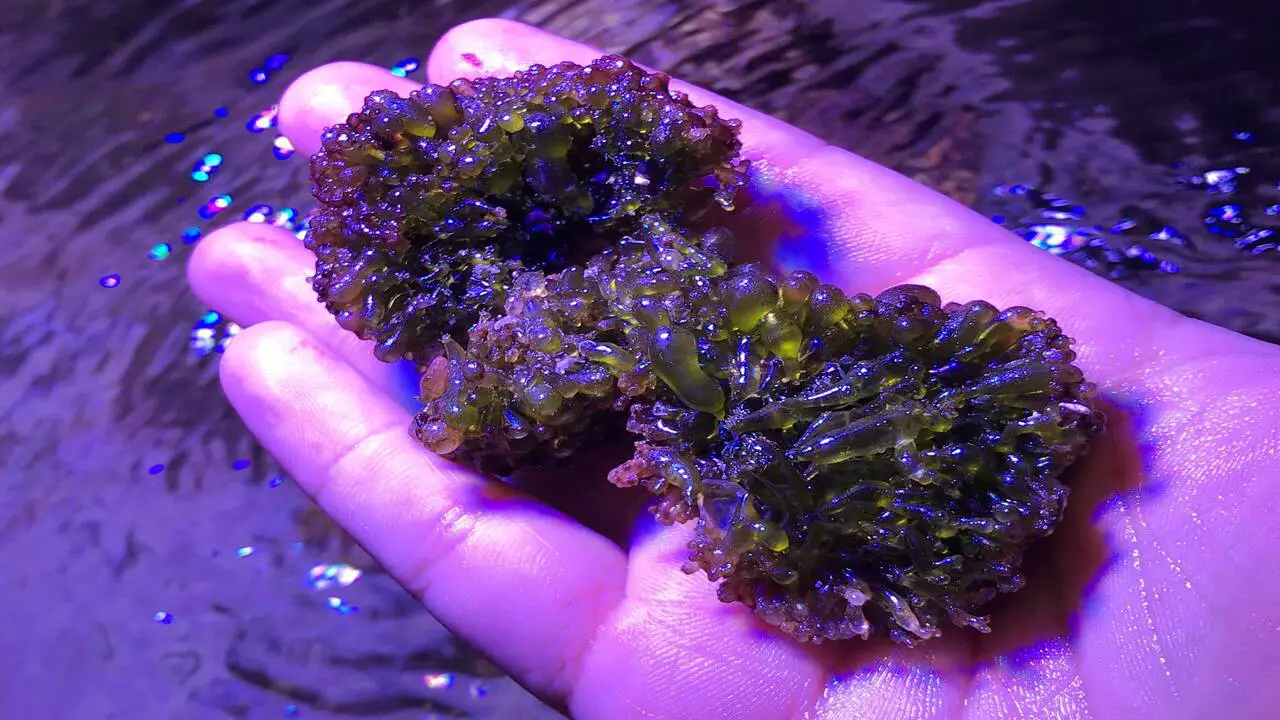
A nutrient imbalance is one of the primary causes of purple algae growth in fish tanks. Excessive levels of nitrates and phosphates provide an optimal environment for algae, including purple algae, to thrive. To prevent nutrient buildup, consider regularly reducing feeding frequency and cleaning uneaten food from the tank.
High-quality filtration systems and regular water changes can help minimize nutrient imbalances and balance the tank’s ecosystem. Another effective method is adding live plants to absorb excess nutrients and compete with algae for resources. Addressing nutrient imbalances can minimize the risk of purple algae growth in your fish tank.
Low Water Flow
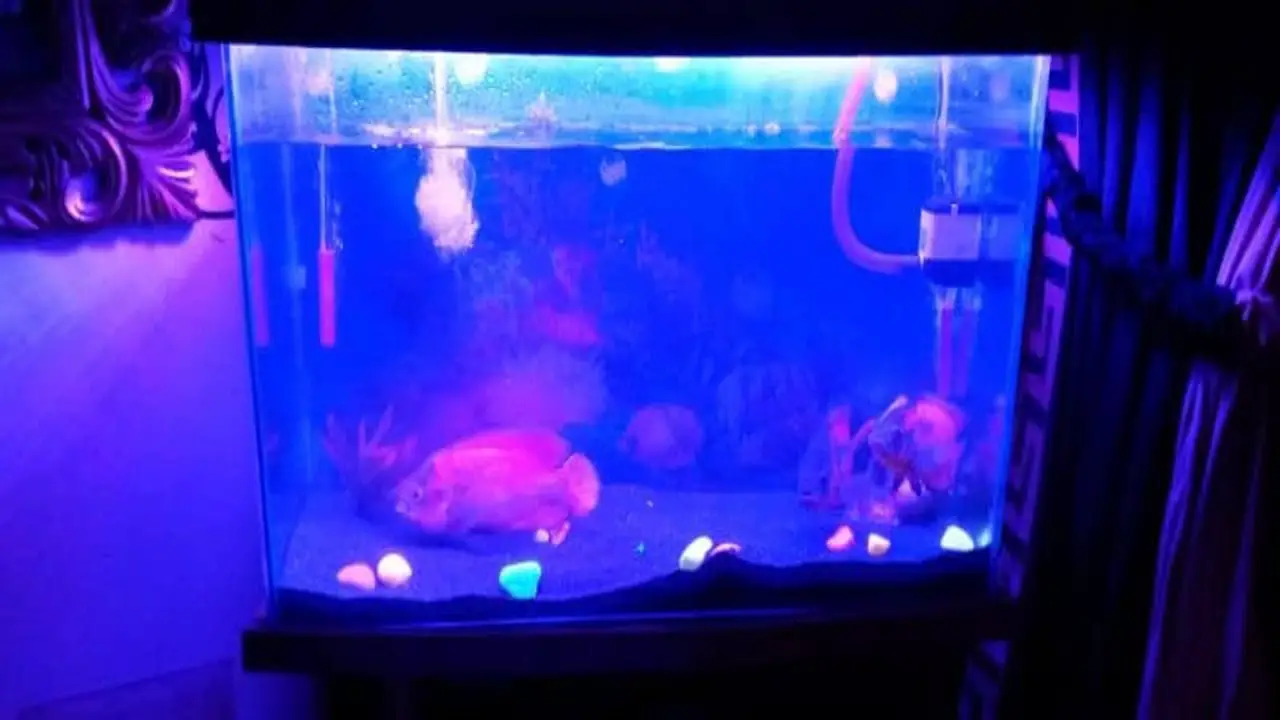
Inadequate water level flow contributes to purple algae growth in fish tanks. Stagnant water with low oxygen levels provides an ideal environment for the proliferation of this type of algae. To prevent the growth of purple algae, it’s essential to ensure proper filtration and increase water flow in the aquarium.
Regular cleaning and maintenance can also help minimize the buildup of debris that can impede water flow. And contribute to the growth of purple algae. Adding live plants or algae-eating fish to the tank can also effectively control—the growth of purple algae by keeping the tank clean and reducing nutrient levels.
High-Intensity Lighting
The type of lighting used in a fish tank can significantly impact the growth of purple algae. High-intensity lighting, in particular, can provide optimal conditions for the algae to thrive and reproduce quickly. Maintaining balanced lighting in the aquarium is important.
Excessive light can promote the growth of algae and other unwanted organisms. To prevent the growth of purple algae, consider using lower-intensity bulbs or reducing the amount of light exposure.
Additionally, it’s crucial to maintain proper water chemistry and perform regular water changes to minimize nutrient buildup. And promote a healthy environment for aquatic life.
High Nutrient Levels
High nutrient levels refer to the concentration of essential vitamins, minerals, and other beneficial substances in a certain food or environment. It is an important factor in maintaining a healthy and balanced diet. Consuming foods with high nutrient levels can provide numerous health benefits, such as improved immune function, increased energy levels, and better overall well-being.
On the other hand, high nutrient levels in the environment, such as in soil or water, can also positively impact plant growth and overall ecosystem health. However, it is important to maintain a balance and not exceed recommended nutrient levels. It can adversely affect human health and the environment.
High Carbon Dioxide Levels
High carbon dioxide levels in fish tanks can lead to the growth of purple algae. This type of algae thrives in environments with elevated CO2 levels, which can occur due to poor ventilation or overstocking of fish. Purple algae can quickly cover surfaces in the tank, causing an unsightly appearance and potentially harming the fish and other aquatic organisms.
To prevent the growth of purple algae, it is important to maintain proper ventilation and ensure that the tank is not overcrowded. Regular water changes and proper filtration can also help to keep carbon dioxide levels in check and maintain a healthy aquatic environment for your fish.
Why Is Purple Algae A Problem?
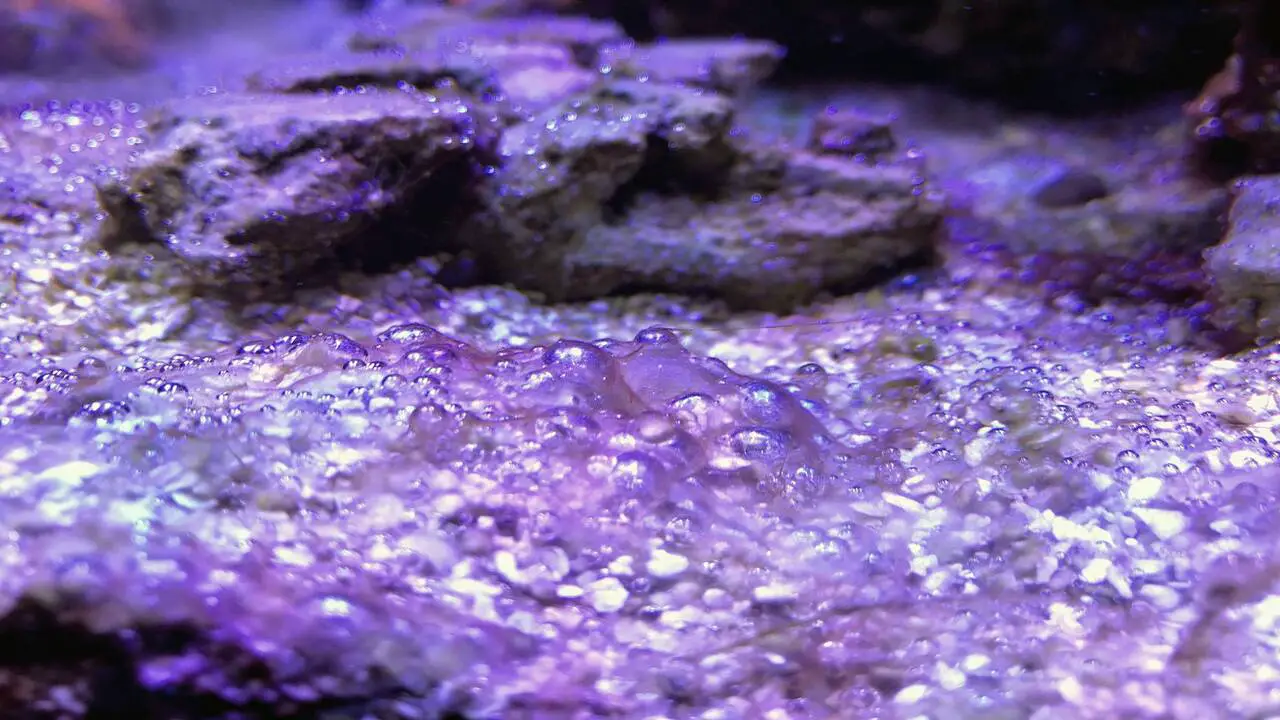
Purple algae, also known as cyanobacteria, has become a growing concern in recent years due to its harmful effects on aquatic ecosystems. This type of algae can rapidly reproduce, forming thick mats on the surface of bodies of water, blocking sunlight and depleting oxygen levels, leading to the death of aquatic plants and animals.
Purple algae in a fish tank can lead to several problems. Not only can it ruin the aesthetic of the aquarium. But it can also harm the ecosystem by depleting oxygen levels and blocking sunlight. However, the biggest issue with purple algae is that it’s tough to remove once it has taken hold.
It requires manual removal, which can be time-consuming and challenging. Therefore, it’s essential to take preventative measures such as regular cleaning. And monitoring nutrient levels to prevent the growth of purple algae in fish tanks.
Getting Rid Of Purple Algae
Purple algae, or cyanobacteria, can be a nuisance for many aquatic environments. Not only does it create an unsightly appearance, but it can also release toxins that can harm other organisms in the water.
Getting rid of purple algae requires a thorough understanding of its growth and environmental factors that promote its development. Proper management techniques such as reducing nutrient levels and maintaining a healthy balance of other algae species can help control its growth.
Additionally, chemical treatments designed for freshwater aquariums can be handy if other methods are ineffective. It’s important to monitor the tank closely after treatment and take steps to prevent future outbreaks, including conducting regular water changes and maintaining proper water chemistry.
Manual Removal
Manual removal is a process handy to eliminate unwanted or harmful materials from a specific area or system. This method involves physically removing the object or substance by hand, often using specialized tools and techniques.
Manual removal is commonly handy when other methods, such as chemical or mechanical removal, may not be suitable or safe. Purple algae can quickly take over a fish tank, altering its aesthetic and disrupting the ecosystem. Manual removal is one of the most successful methods to eliminate purple algae.
Using a scraper or brush, gently remove the algae from the tank’s walls and decorations, being mindful not to disturb the substrate or harm any fish or plants. Regular maintenance and cleaning can also help prevent the growth of purple algae in a fish tank. Identifying and addressing the root cause of purple algae growth, such as overfeeding or inadequate lighting, is crucial to prevent future outbreaks.
Light Control
Light control is one of the most effective ways to prevent purple algae growth in fish tanks. Purple algae thrive on excess light, so regulating the light your tank receives is crucial. To control the lighting schedule, consider using a timer or reducing the duration of light exposure.
Additionally, using a lower-wattage bulb or adding floating plants can help control the amount of light entering your tank without compromising on adequate lighting for your aquatic plants. Maintaining a balance between these factors can go a long way in preventing purple algae growth and keeping your fish tank healthy and beautiful.
Chemical Treatment
Chemical treatment is a process used to alter a substance’s properties through chemical compounds. It is a widely used method in various industries, such as water treatment, pharmaceuticals, and agriculture. Chemical treatment aims to enhance a product’s quality, improve its performance, or remove impurities.
While manual removal and light control are effective ways to eliminate algae in fish tanks, chemical treatment is also an option. Algaecides can kill off the algae. However, it’s essential to use them carefully and follow the instructions on the label closely. Some chemical treatments may harm other organisms in the tank or alter the water chemistry.
It’s advisable to consider using natural methods, such as increasing water flow or adding live plants, before resorting to chemical treatments. Regular maintenance, cleaning, and identifying and addressing the root cause of purple algae growth can help prevent its recurrence in your fish tank.
How Do You Control Purple Algae Growth In A Freshwater Fish Tank?

Controlling purple algae growth in a freshwater fish tank can be challenging. Purple algae, or cyanobacteria, can quickly take over the tank and cause water quality issues if left unchecked. It is important to address the underlying causes to control this type of algae. Here are some steps you can take to control purple algae growth in your fish tank:
Introduce Siamese Algae Eaters
Introducing Siamese Algae Eaters can be an effective solution if you’re struggling with purple algae growth in your freshwater fish tank. These small, peaceful fish are known for their appetite for algae and can help to keep your tank clean and free from excessive algae growth.
Siamese Algae Eaters are particularly effective at controlling purple algae, as they feed on the visible parts of the algae and the spores that cause it to spread. Adding a few Siamese Algae Eaters to your tank lets you enjoy a healthier and more aesthetically pleasing aquarium environment.
Limit Lighting
One effective way to control purple algae growth in a freshwater fish tank is by limiting the amount of lighting. Purple algae, also known as cyanobacteria, thrives in bright light conditions. By reducing the duration and intensity of lighting in your tank, you can create an environment that is less conducive to algae growth.
Consider using a timer to regulate the amount of light your tank receives each day, and avoid placing your tank near direct sunlight or other sources of excessive light. Maintaining proper water parameters such as regular water changes and nutrient control can also help prevent the growth of purple algae in your fish tank.
Avoid Overfeeding Your Fish
Avoiding overfeeding your fish is a key step in controlling purple algae growth in a freshwater fish tank. Excess food that is left uneaten can contribute to an increase in nutrients in the water, which can fuel algae growth. It is important only to feed your fish the amount of food they can consume within a few minutes.
If leftover food is floating around in the tank, it should be removed promptly to prevent it from decomposing and releasing additional nutrients into the water. By practising proper feeding habits and ensuring that no excess food is left in the tank, you can help maintain a healthy balance and reduce the risk of purple algae growth.
Add Live Plants In The Tank
Adding live plants to your freshwater fish tank can be an effective way to control purple algae growth. Live plants help consume excess nutrients in the water, which can help prevent algae growth. They also provide competition for resources, making it harder for algae to thrive.
When choosing plants for your tank, look for species that are known to be good at nutrient absorption and fast-growing, such as Anubias or Java ferns. Be sure to properly care for the plants by providing adequate lighting and fertilization, as healthy plants can outcompete algae. Adding live plants to your tank can create a more balanced and visually appealing environment for your fish while keeping purple algae growth in check.
Use Algaecides
One effective method for controlling purple algae growth in a freshwater fish tank is algaecides. Algaecides are chemical treatments that can help eliminate and prevent algae growth in your tank. They work by targeting and destroying the algae cells, effectively stopping their growth.
However, it is important to note that algaecides should be used cautiously, as they can also harm other aquatic life in your tank if not used properly. It is always recommended to follow the instructions provided by the manufacturer and consult with a professional or experienced aquarist before using any algaeecides in your fish tank.
Maintain Tank Water Conditions
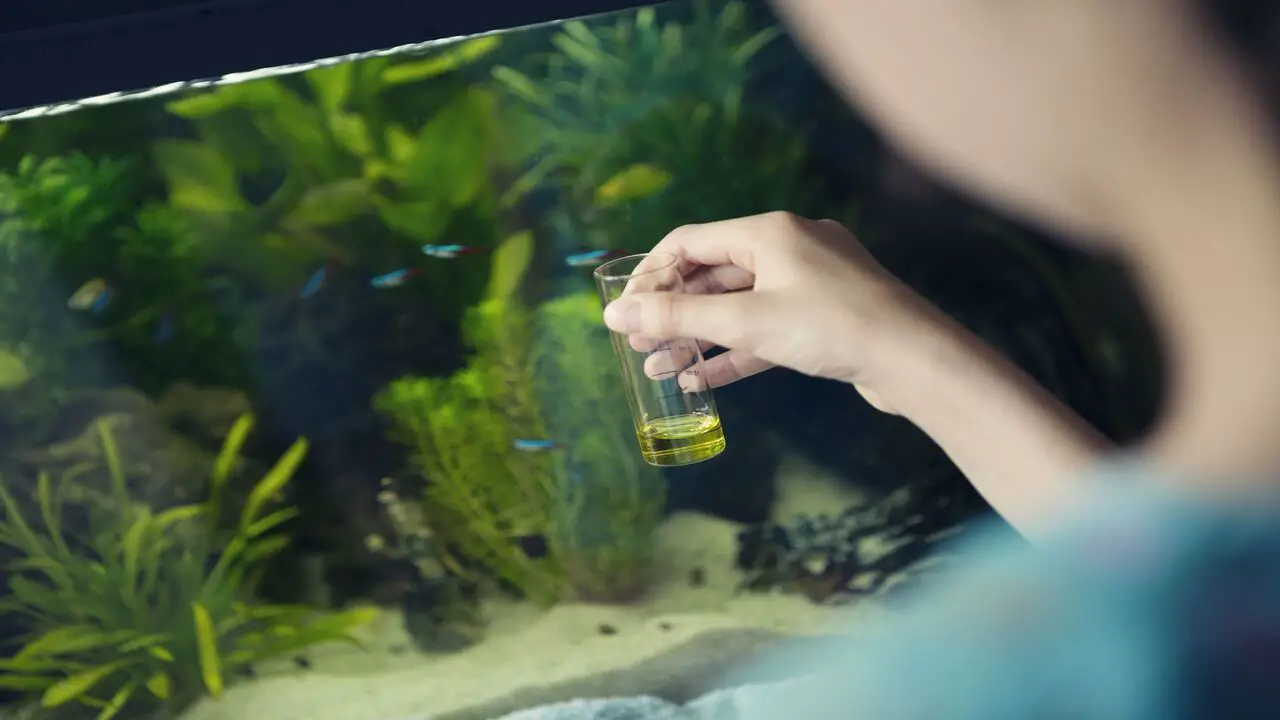
Maintaining proper tank water conditions is crucial for controlling purple algae growth in a freshwater fish tank. Purple algae, also known as cyanobacteria, thrive in nutrient-rich environments with high levels of phosphates and nitrates.
To prevent and control its growth, it is important to test the water parameters and make necessary adjustments regularly. This includes monitoring and maintaining appropriate pH levels, ammonia, nitrite, and nitrate. Additionally, a regular water change schedule can help dilute excess nutrients and reduce the likelihood of purple algae blooms.
It is also recommended to avoid overfeeding your fish, as uneaten food can contribute to nutrient buildup in the tank. By taking these preventative measures and staying diligent in maintaining proper water conditions, you can effectively control purple algae growth in your freshwater fish tank.
Conclusion
Purple algae may seem harmless at first glance, but it can cause significant damage to your fish tank and its inhabitants. Knowing the causes of this algae and how to get rid of it effectively is essential. Prevention is always better than cure, so maintain a clean tank by regularly changing water, feeding balanced meals, and controlling lighting intensity.
If you suspect your tank has purple algae, immediately remove it manually or chemically. We hope now you understand what purple algae in fish tanks what purple algae are in fish tanks. Purple algae is a common problem affecting fish tanks and cannot be easily eliminated. There are a few ways that you can try to get rid of the algae, and each has its benefits and drawbacks.
Frequently Asked Questions
What Is The Purple Slime In My Fish Tank?
The purple slime in your fish tank is likely a type of algae known as cyanobacteria. It is common in aquariums and can form slimy, purple-coloured mats on surfaces. This algae is often caused by imbalances in the tank, such as high nutrient levels or poor water circulation.
What Algae Is Bad For Fish Tanks?
The most common algae that is considered bad for fish tanks is the green algae (Chlorophyta). It can rapidly grow and cover surfaces, causing an unsightly appearance and potentially blocking light from reaching aquatic plants.
Why Is Some Algae Purple?
Some algae appear purple because they contain a pigment called phycoerythrin. This pigment absorbs blue and green light and reflects red light, giving the algae a purple color. Phycoerythrin helps the algae harvest light energy for photosynthesis in deeper waters where blue and green light are less abundant.
Is Red Algae In Fish Tanks Good Or Bad?
Red algae in fish tanks can be both good and bad. It can add aesthetic appeal and provide a natural environment for some fish and invertebrates in small amounts. However, an excessive growth of red algae can indicate an imbalance in the tank’s water chemistry or lighting conditions.
Can Red Algae Survive In Freshwater?
Red algae typically cannot survive in freshwater as they are mostly found in marine environments. Red algae require specific conditions, such as a high saltwater concentration and specific nutrients not usually found in freshwater habitats.

Aquarium passion is all about connecting with the aquatic life and providing education to the public on the importance of these creatures. We showcase a wide variety of marine life through our exhibits as well as working with schools to provide unique learning opportunities for students of all ages.

